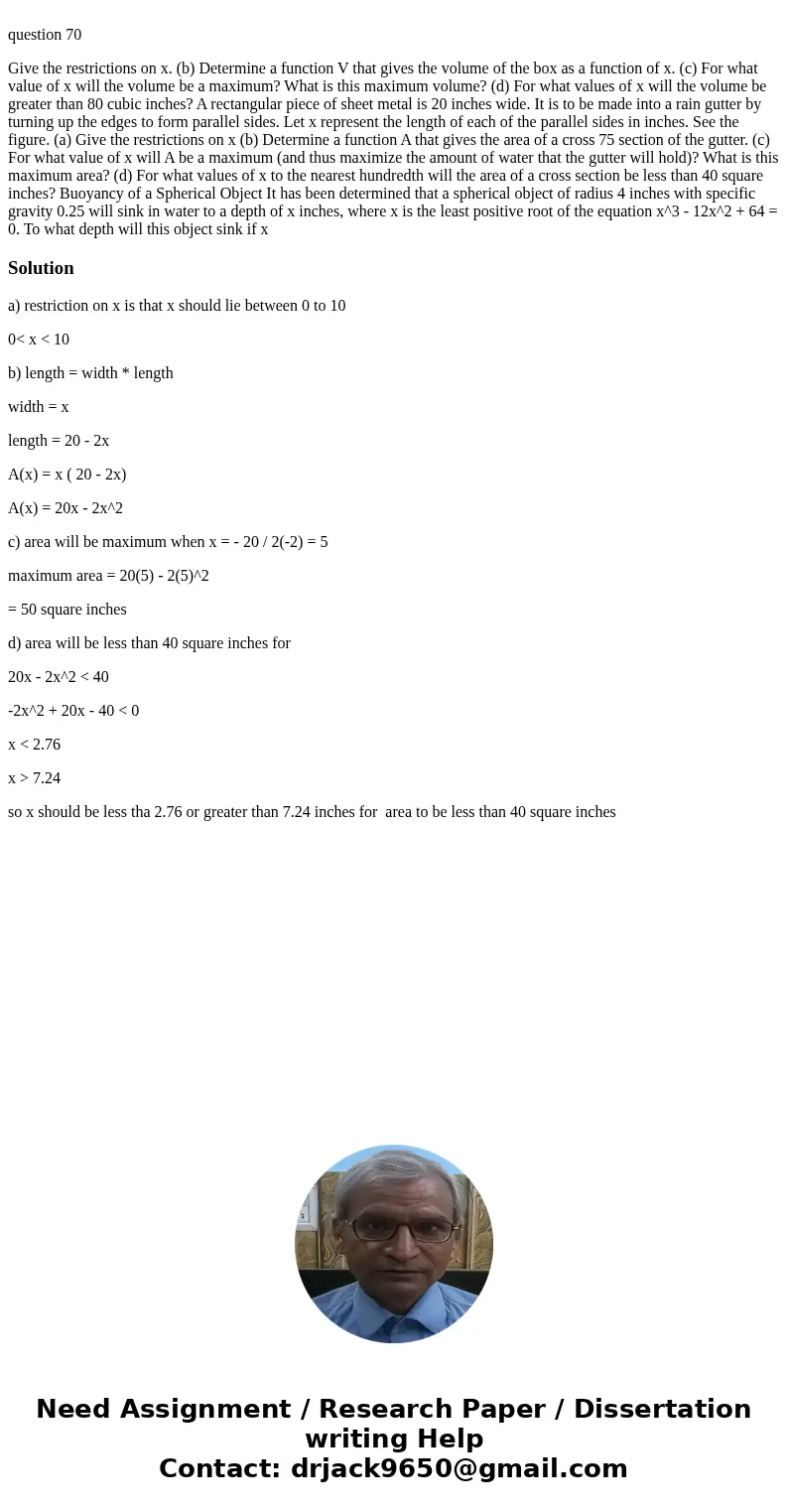question 70
Give the restrictions on x. (b) Determine a function V that gives the volume of the box as a function of x. (c) For what value of x will the volume be a maximum? What is this maximum volume? (d) For what values of x will the volume be greater than 80 cubic inches? A rectangular piece of sheet metal is 20 inches wide. It is to be made into a rain gutter by turning up the edges to form parallel sides. Let x represent the length of each of the parallel sides in inches. See the figure. (a) Give the restrictions on x (b) Determine a function A that gives the area of a cross 75 section of the gutter. (c) For what value of x will A be a maximum (and thus maximize the amount of water that the gutter will hold)? What is this maximum area? (d) For what values of x to the nearest hundredth will the area of a cross section be less than 40 square inches? Buoyancy of a Spherical Object It has been determined that a spherical object of radius 4 inches with specific gravity 0.25 will sink in water to a depth of x inches, where x is the least positive root of the equation x^3 - 12x^2 + 64 = 0. To what depth will this object sink if x
a) restriction on x is that x should lie between 0 to 10
0< x < 10
b) length = width * length
width = x
length = 20 - 2x
A(x) = x ( 20 - 2x)
A(x) = 20x - 2x^2
c) area will be maximum when x = - 20 / 2(-2) = 5
maximum area = 20(5) - 2(5)^2
= 50 square inches
d) area will be less than 40 square inches for
20x - 2x^2 < 40
-2x^2 + 20x - 40 < 0
x < 2.76
x > 7.24
so x should be less tha 2.76 or greater than 7.24 inches for area to be less than 40 square inches

 Homework Sourse
Homework Sourse